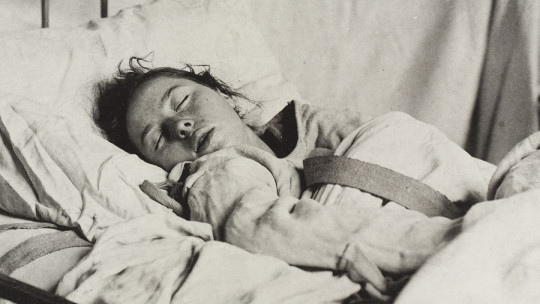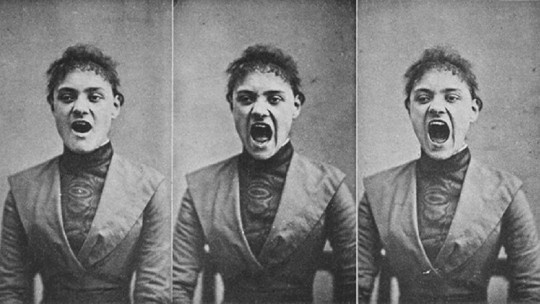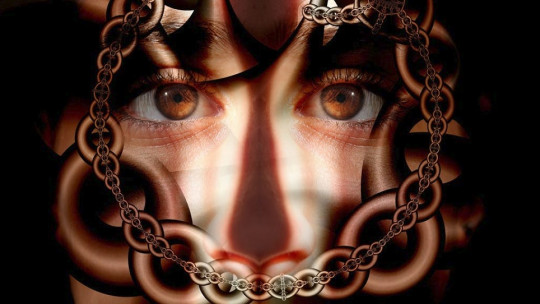Formerly known as hysteria, Conversion disorder became famous in the late 19th century the majority of people diagnosed were women, who were thought to be repressed by the society that surrounded them.
On the other hand, Sigmund Freud himself proposed that this disorder had its origin a repressed feeling of anger or unresolved internal conflicts using hypnosis as the main remedy for this alteration.
Currently, it has been investigated in much more depth, and is also called dissociative disorder, a mental disorder in which the person unconsciously abandons control when integrating emotions or experiences and manifesting the discomfort through physical symptoms.
What is conversion disorder?
Conversion disorder refers to a whole set of symptoms that interfere with human behavior and that apparently take the form of a neurological condition. However These symptoms do not correspond to any diagnosed physical alteration nor can they be justified by any other illness.
Currently, the main characteristic of this disorder is the appearance of symptoms or difficulties that interfere with the person’s normal activity, both at a motor and sensory level. These difficulties are not voluntary and are associated with psychological factors or alterations.
The term conversion is used to refer to the patient’s ability to involuntarily transform a psychological alteration into a physical disorder or difficulty. These abilities can range from the simple difficulty or inability to operate some body parts to the use of the senses. For example, it has been documented that in some cases apparent blindness is experienced
As mentioned above, people who suffer from this condition do not fake their symptoms, but rather suffer from real distress, so it is not advisable to affirm in front of the patient that all their difficulties and ailments are inside their head.
Symptoms of conversion disorder
This type of complex disorder can present two types of symptoms, both motor and sensory:
Motor symptoms
Sensory symptoms
Causes and risk factors
Although the causes of conversion disorder have not been concisely established, it is theorized that the above symptoms are related to the appearance of some psychological conflict or some stressful event
Generally, the signs appear suddenly after the person experiences a traumatic or stressful experience. It has been observed that patients who suffer from this disorder usually also have:
However, conversion disorder can also occur in apparently healthy people, with a series of risk factors that make these subjects an easy target for this disorder.
- excessive stress
- emotional traumas
- Belong to the female sex
- Family members with conversion disorders
- Experiences of both physical and sexual abuse
Diagnosis
There are several steps to follow to make a proper conversion disorder diagnosis. First of all, a distinction must be made as to whether the person really suffers from a conversion disorder or, instead, is faking the symptoms.
Although it can be a complicated task, people with tendencies to fake symptoms usually seek to obtain some benefit from faking; this motivation can be economic, emotional, need for attention, etc.
Next, you have to exclude the possibility that it is the impact of a neurological disease since this disease usually takes forms similar to that of a neurological disorder such as headache, epilepsy or sclerosis.
Therefore, it is vitally important that clinical staff rule out 100% any possibility of an underlying neurological disease; for this, the neurology specialist must perform a thorough examination of the patient.
Likewise, it is necessary to eliminate the possibility that it is another type of disorder, such as factitious disorder or Munchausen syndrome by proxy. In the first, the person fakes the symptoms with the intention of avoiding obligations or being the center of attention; and in the second, one of the parents or a caregiver creates fictitious symptoms or causes some real ones in the minor.
Finally, and with the aim of making the most accurate diagnosis possible, it is necessary for the patient to present the following diagnostic criteria present in the Diagnostic and Statistical Manual of Mental Disorders (DSM):
- Presence of one or more difficulties that interfere with motor or sensory functions that suggest the presence of a neurological or medical alteration.
- Existence of previous events, experiences or conflicts that may be associated with the symptoms.
- The set of symptoms are not caused consciously or voluntarily.
- The symptomatology is not justified by the presence of another alteration or medical condition nor by substance use.
- The symptoms cause a clinically significant problem, interfering in the different areas of the patient’s daily life and requiring medical attention.
- With set of symptoms is not restricted to pain or deficits in sexual function does not appear during a somatization disorder and is not due to the onset of another sexual disorder.
Treatment and prognosis
The fundamental point in the treatment of conversion disorder is to suppress or reduce the source of stress, or on the other hand work with the traumatic events that the patient has experienced in order to reduce the level of tension in it.
On the other hand, it is necessary to eliminate secondary gains or benefits that the patient may be obtaining from this behavior, even if he or she is not fully aware of it.
Habitually, the symptoms may subside automatically, lasting from days to weeks and eventually remitting automatically. However, there are a series of resources and interventions which can benefit the patient. These are:
- Explanation of the disease
- Psychotherapy
occupational therapy
- Treatment of other present disorders such as depression or anxiety










